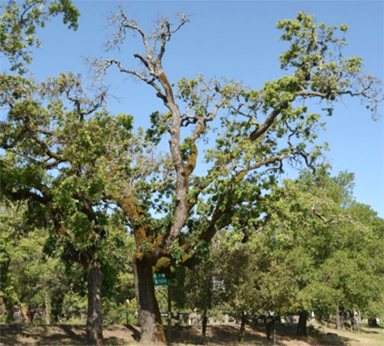Mediterranean Oak Borers: One more threat for suffering trees

By Susan Mates, Treekeepers of Washington County
If you thought drought, heat domes and Emerald Ash borers were a lot for our trees to deal with, a new assault is threatening them. Mediterranean oak borers have come to town, and our native oaks are at great risk. First discovered in Troutdale in 2018, the beetles have advanced their attack on Oregon white oaks (Quercus garryana), spurring Wilsonville to remove one mighty oak already and worry about others.

Mediterranean oak borers (MOB) may be tiny—about the size of a pencil lead—but they pack a big wallop. The female beetles tunnel into trees where the bark is thin or cracked, usually in broken or upper branches of oak trees and other hardwoods. They carry fungi to inoculate their tunnels before laying their eggs. The hatching larvae eat the fungus that has grown in the tunnels. Susceptible trees begin struggling with a wilting disease caused by the fungi as well as the beetle infestation. Over a few years, generations of beetles work their way toward the main trunk until the host tree dies.
Trees that are already suffering from drought, other pests, or disease are especially susceptible. Horror stories of dying oaks in California have been giving us warning signs in recent years. The first sign of an infestation is individual branch death in the top third of a mature oak tree. Eventually, leaves fall off to leave bare, dead branches. The branch death marches down the tree to the main trunk over a period of three-to-five years as the beetle population increases. Round entrance and exit holes about 1/16” in diameter or black stained tunnels may be spotted.
The Oregon Department of Agriculture and the Oregon Department of Forestry have been trapping MOB in Woodburn since 2022. Researchers at the University of California, Davis are investigating best management practices.
What you can do: Don’t move firewood! That is one way forest insects and diseases spread. Learn more here. Report signs and symptoms of possible MOB infestations you observe. Describe the location, your observations, and include photos.
At Treekeepers of Washington County, we work to protect and advocate for trees. Join us! [www.treekeeperswc.org]





